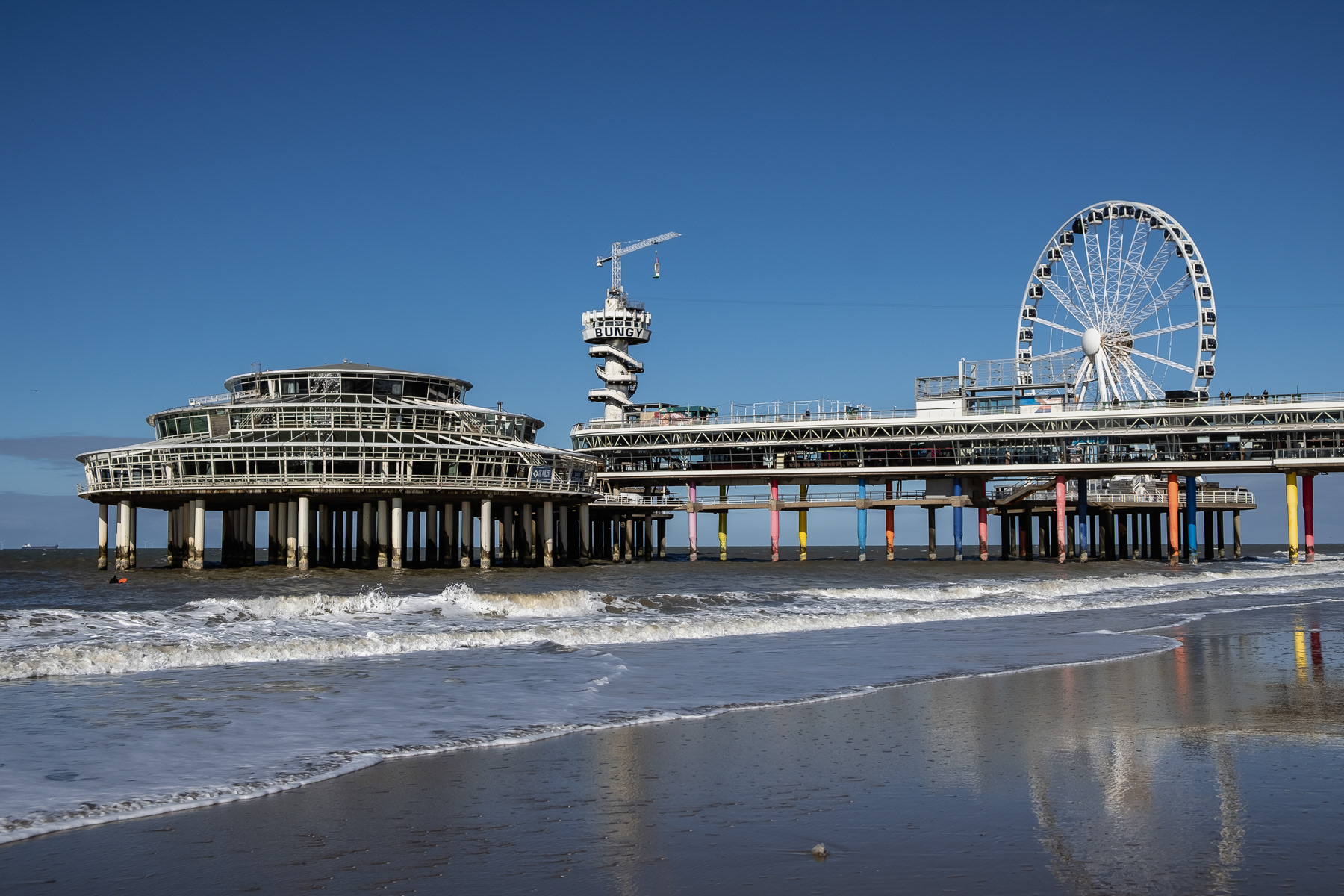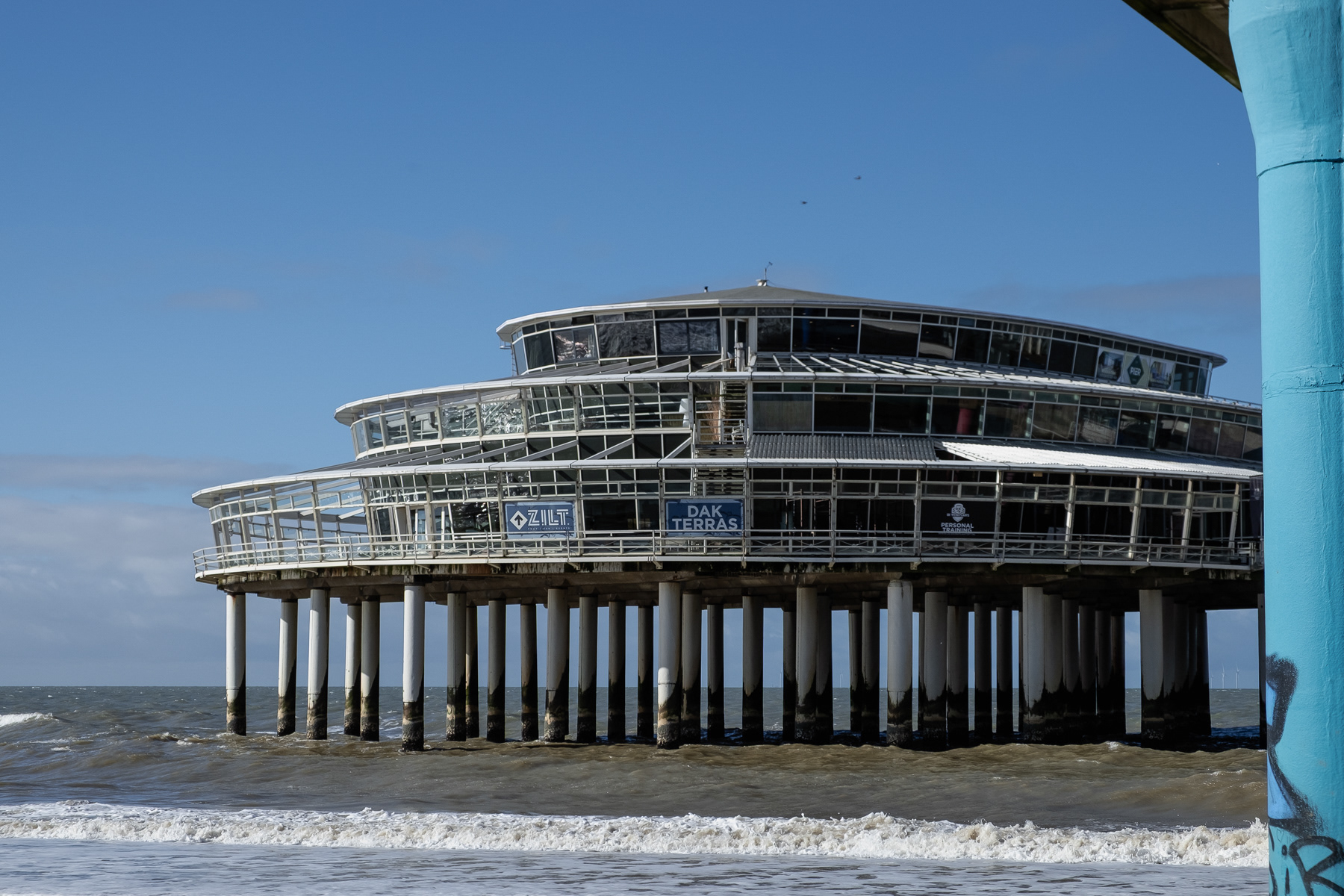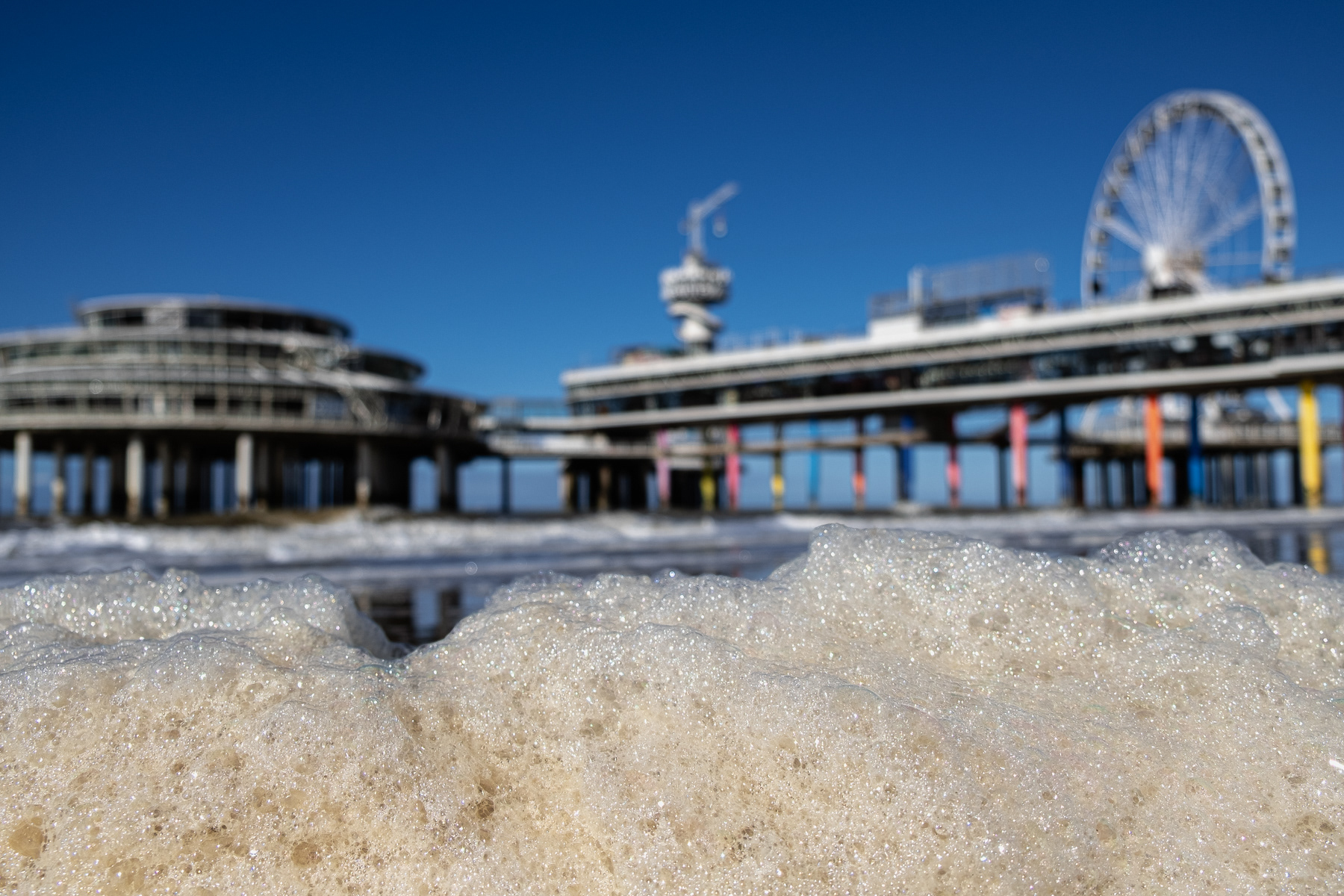View of the modern skyline of The Hague, with the Binnenhof parliament buildings in the forefront of the photo undergoing renovation, February 2025.
View over the centre of The Hague at sunset, April 2025
Den Haag CS seen from the tram station inside the terminal, one floor up, October 2024
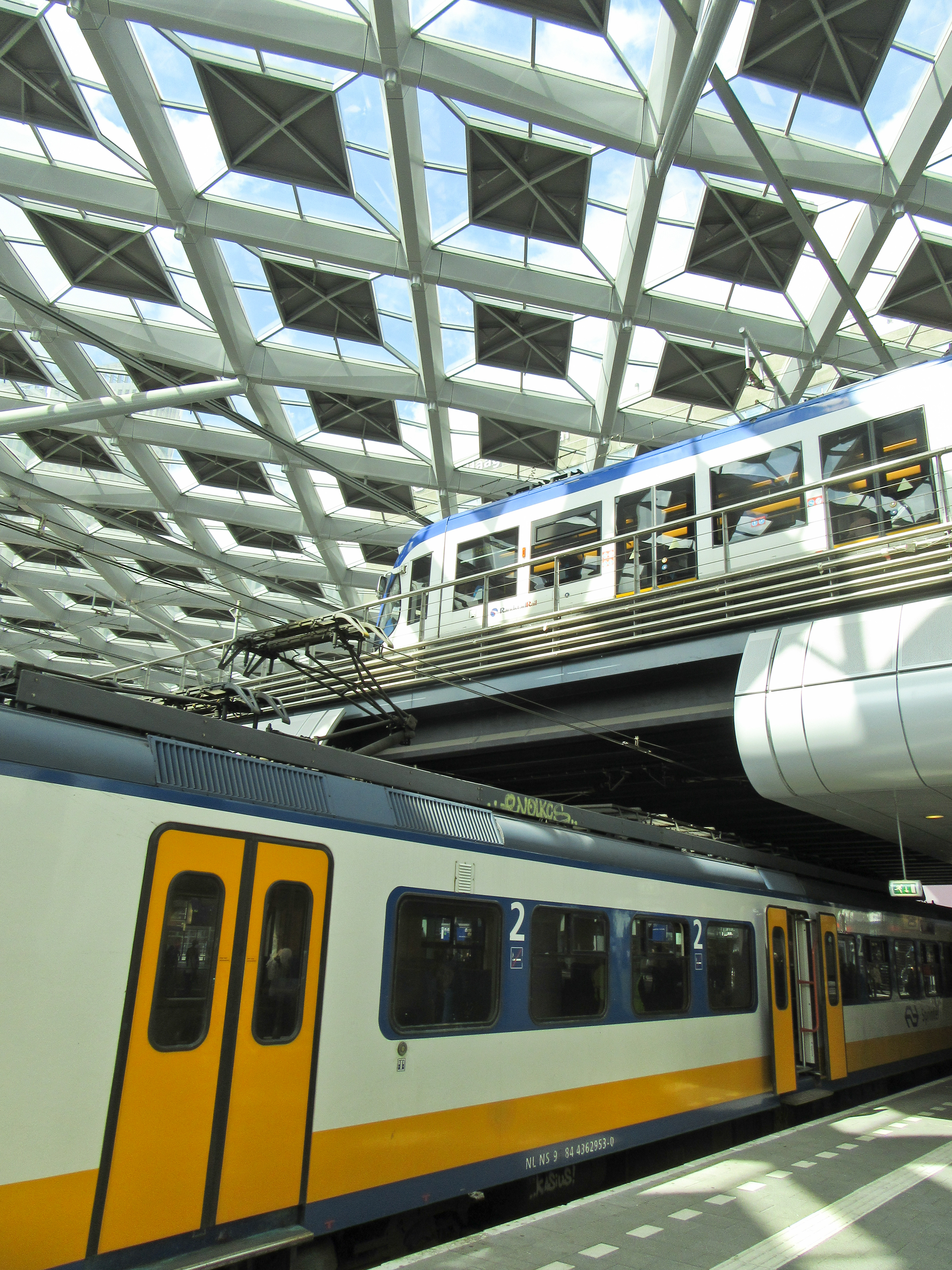
Trains on ground level and trams above, August 2016.
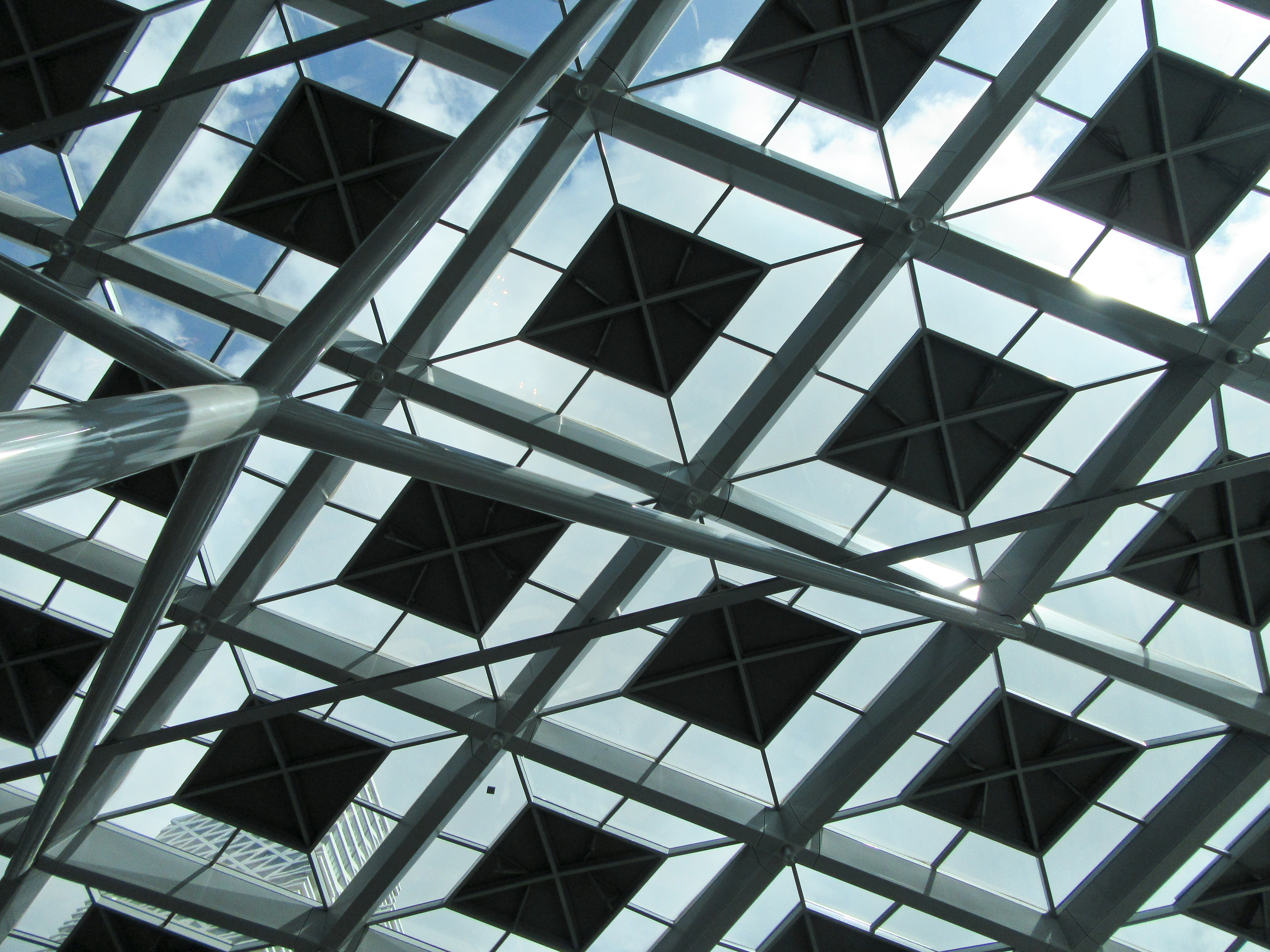
The innovative glass roof with diamond panels.
Just around the corner of The Hague Central station is tram stop The Hague Beatrixkwartier, designed by Zwarts & Jansma architects. Because of the outer design of the station, the local nickname for this place is "fishnet stocking" ("netkous" in Dutch).Photo of May 2009.
Beatrixkwartier tram stop, May 2009
The skyscrapers at Turfmarkt, with on the left the red brick-glad Ministry of Interior Affairs, and in the middle the white, granite-glad Ministry of Justice. April 2025.
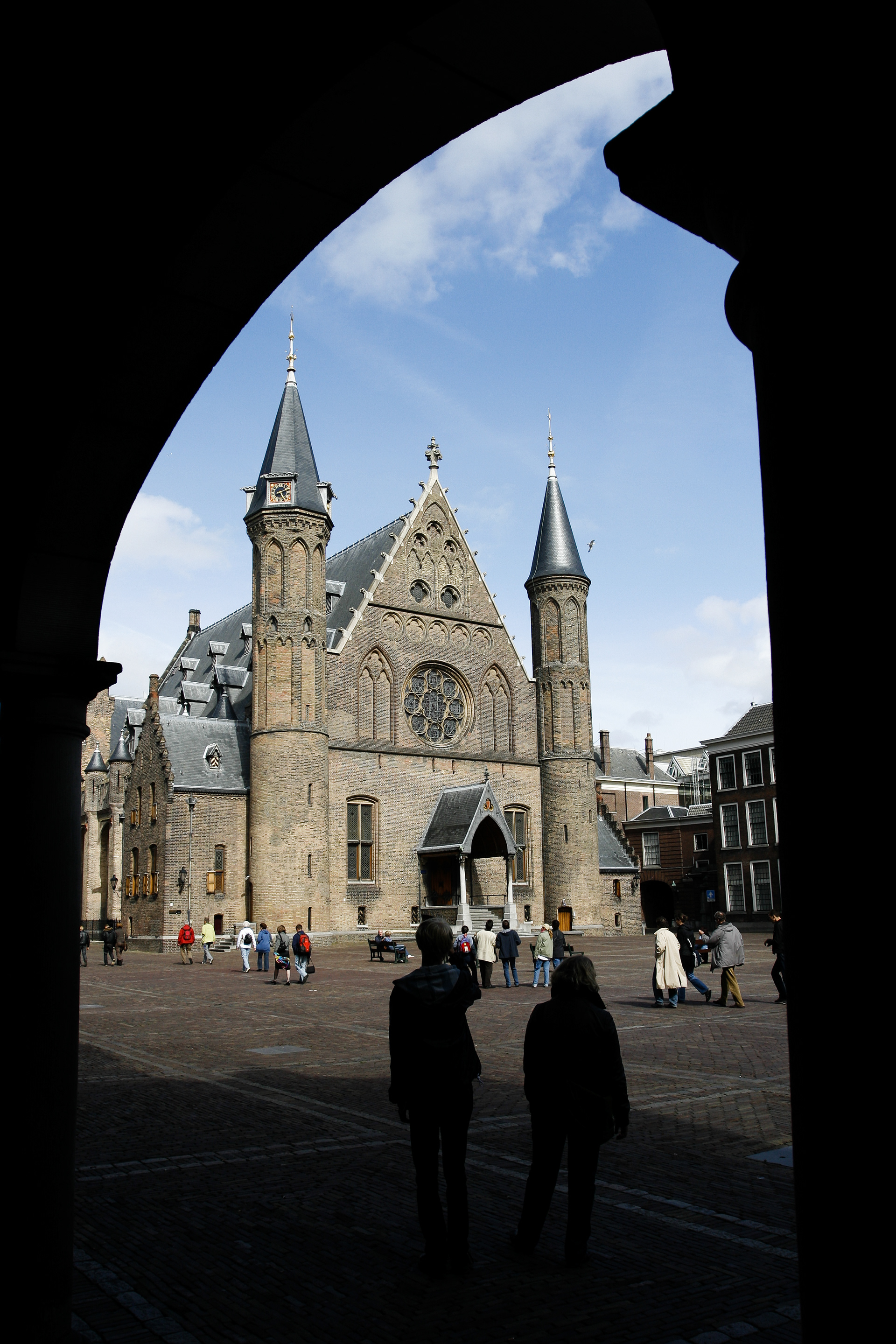
The Knight's Hall (Ridderzaal) inside the Binnenhof, July 2009.
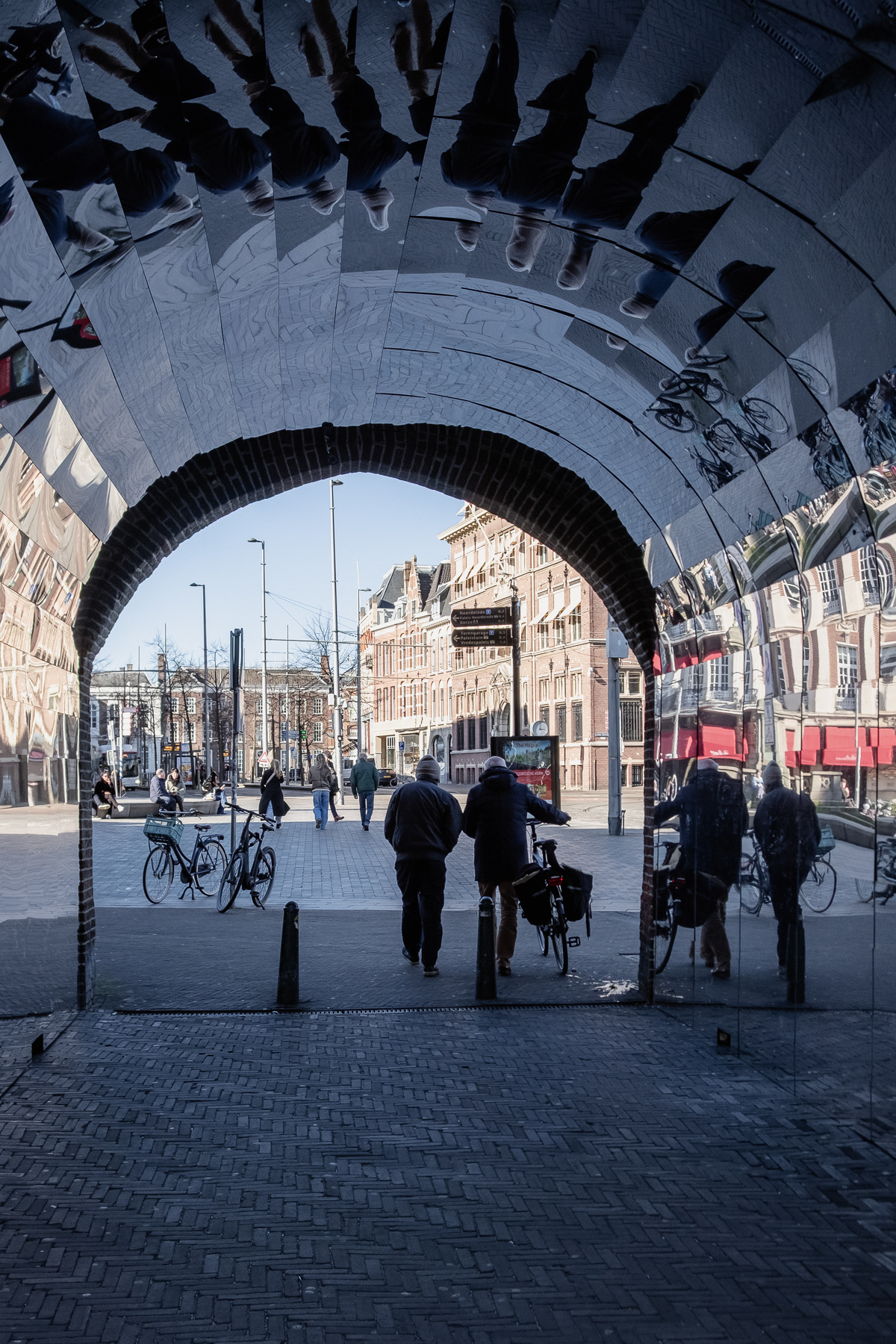
The mirror-clad Prison Gate just outside the Binnenhof area, February 2025.
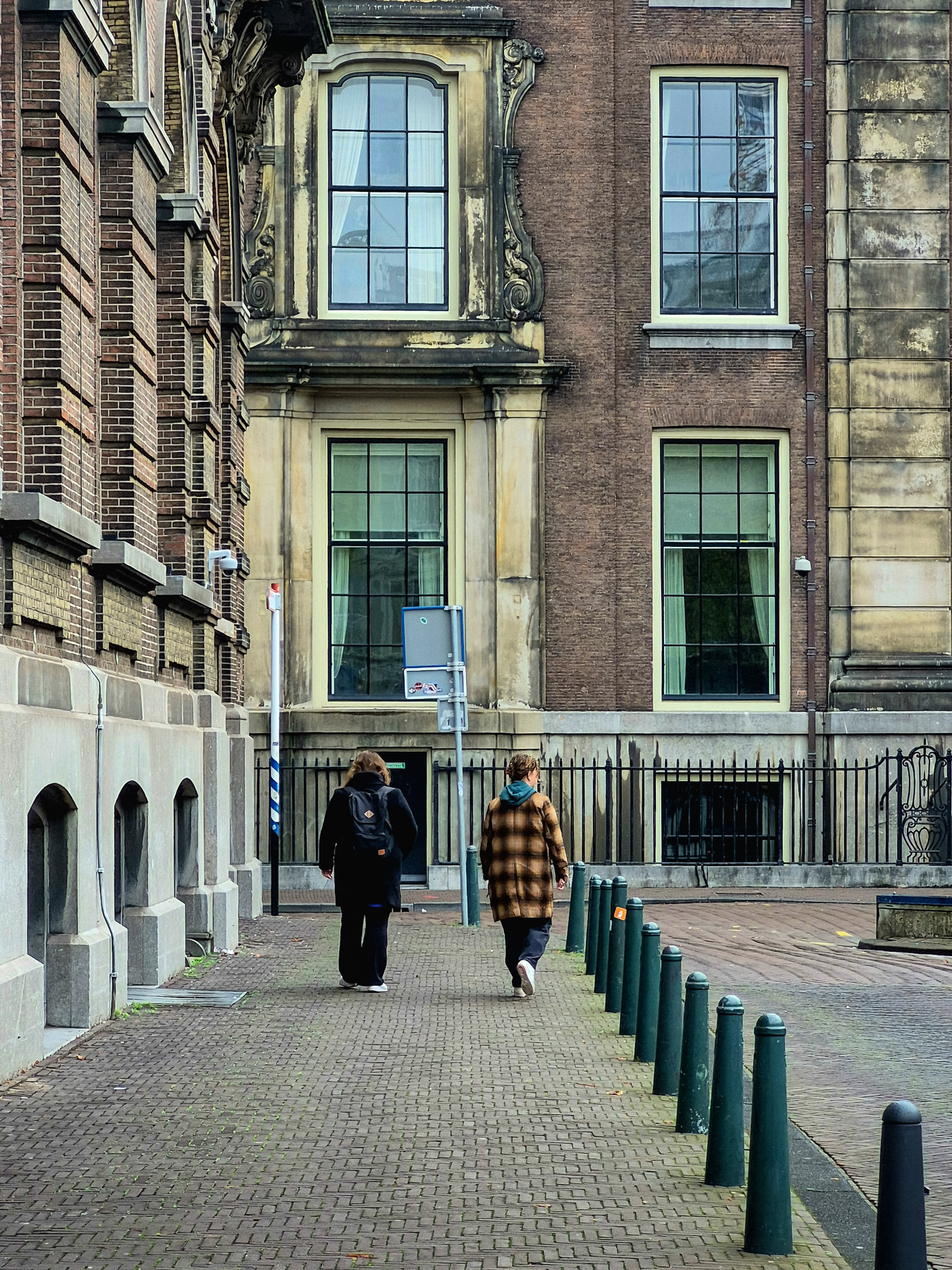
Plein ("Square"), October 2025.
The Binnenhof and its pond with the first high rises in the background in May 2009.
View at a square simply called Plaats (Place) in Dutch, and the Kneuterdijk road. In the downleft corner the Gevangenpoort.
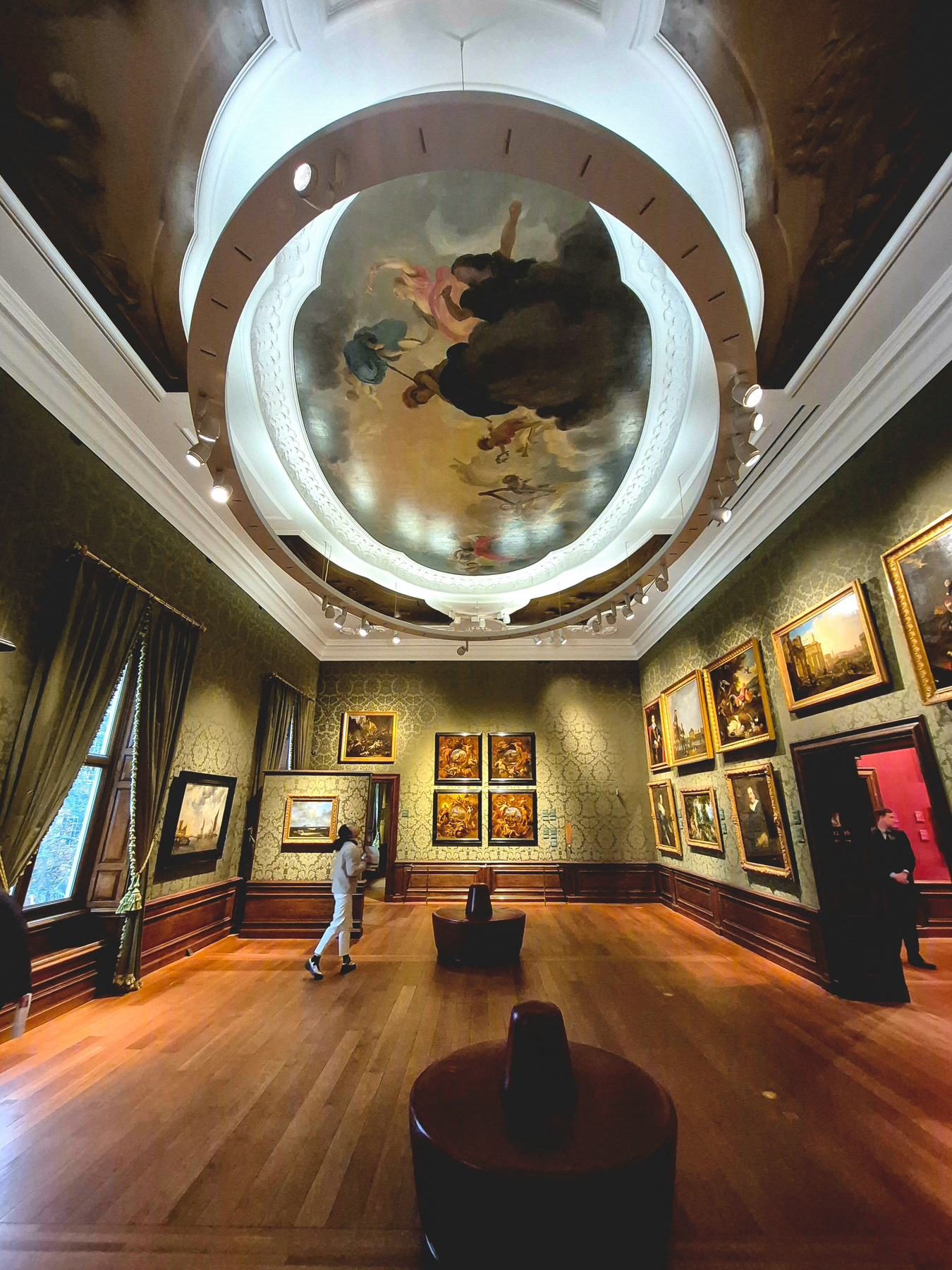
Inside the Maurithuis Art Museum. Apollo and the 9 muses. October 2025.
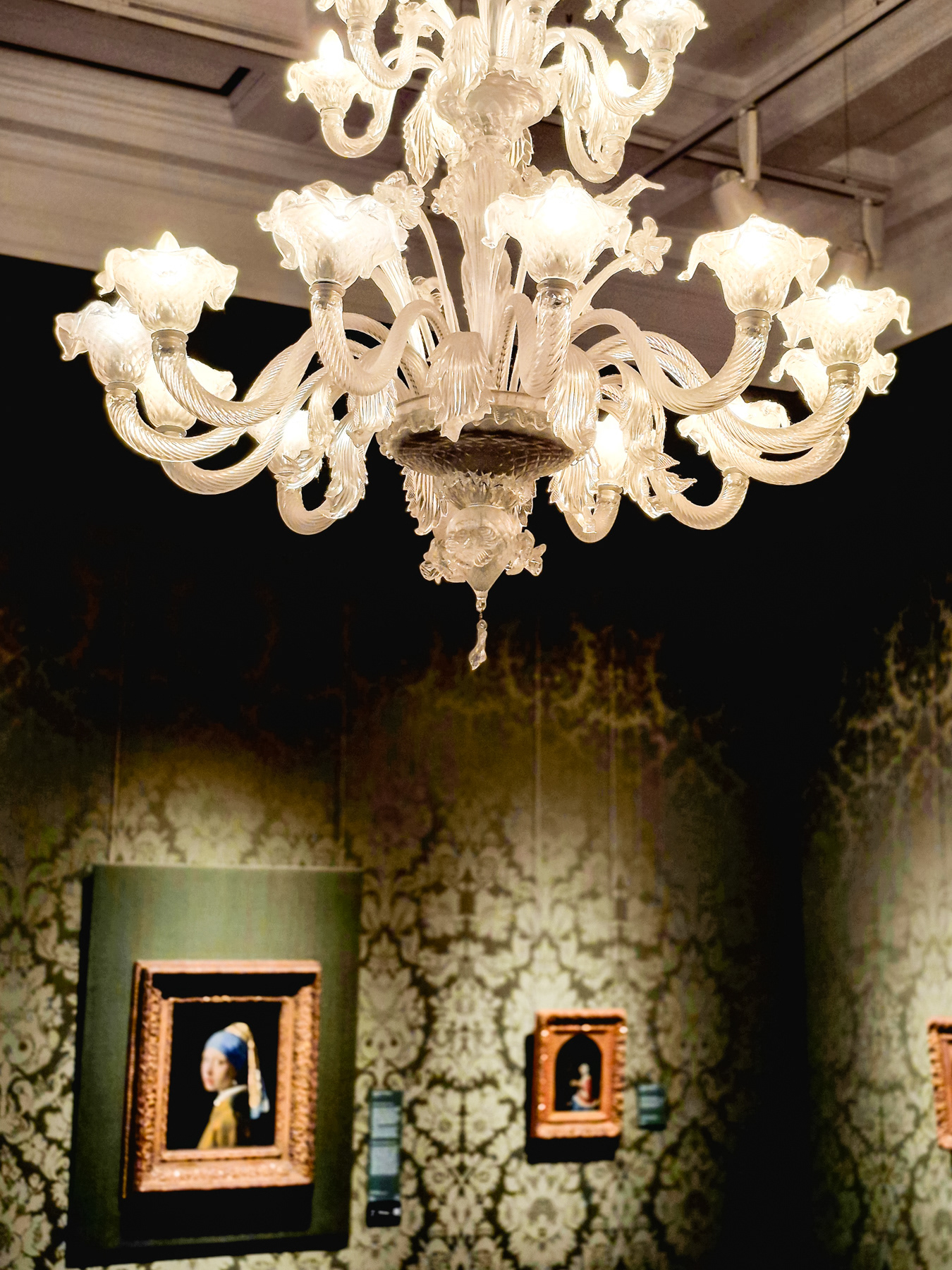
The girl with the fancy chandelier. Inside the Maurithuis Art Museum, October 2025.
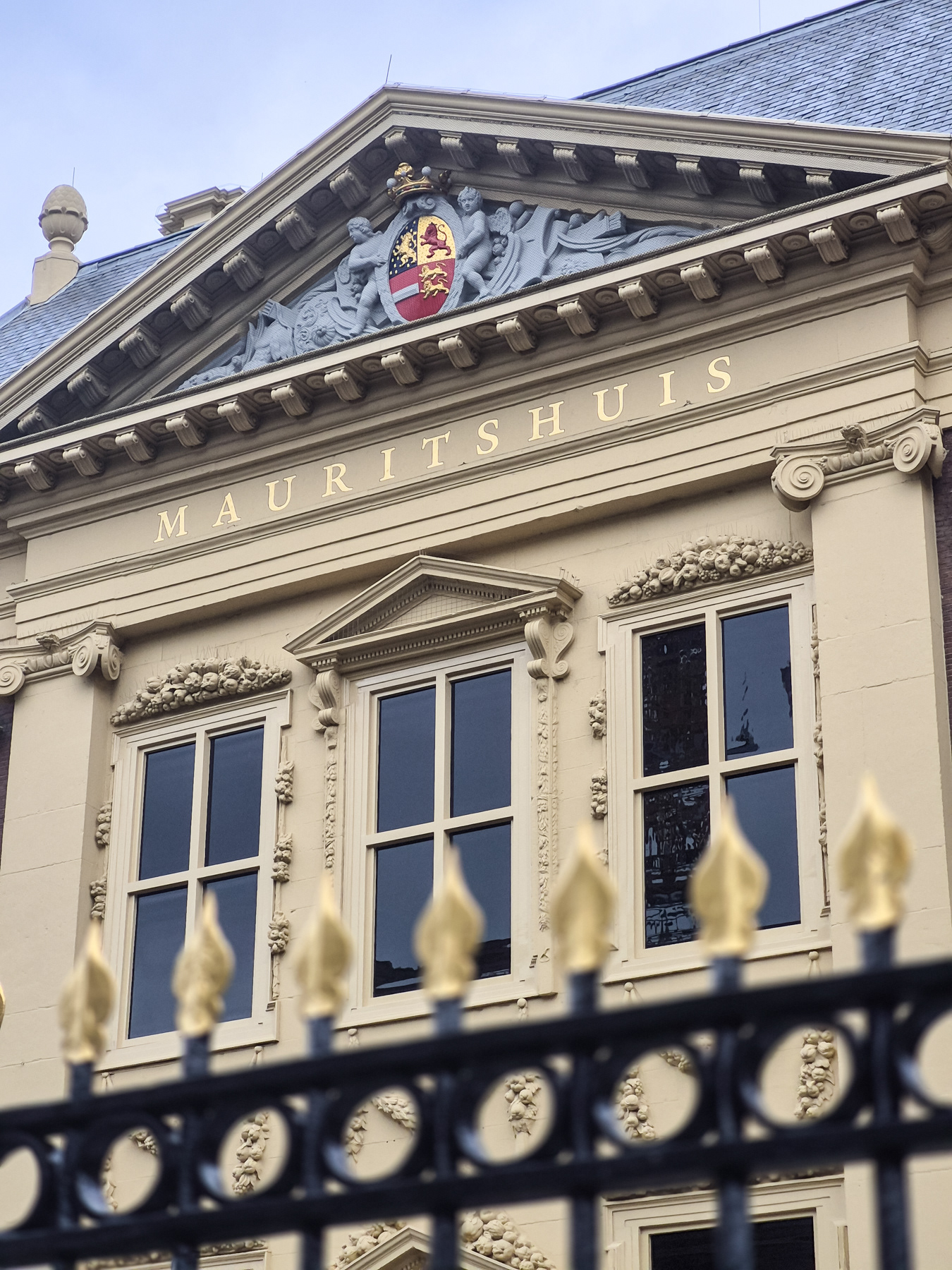
Mauritshuis Art Museum, October 2025.
Smidswater and distant view towards the monumental Maliebrug arched bridge, October 2025.
Lange Voorhout, October 2019.

View towards Noordeinde from the Heulstraat
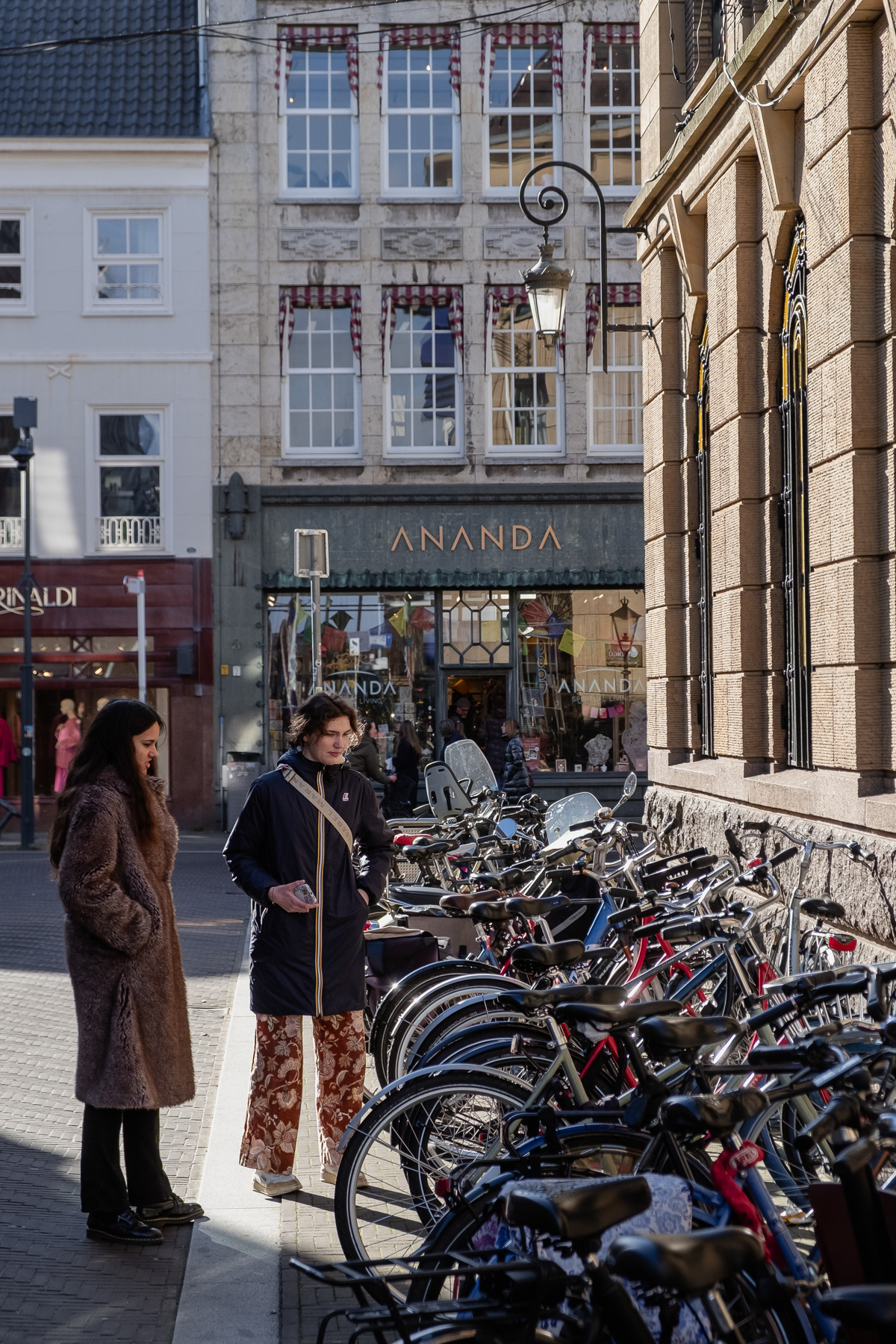
Noordeinde Palace with the statue of Prince William the First
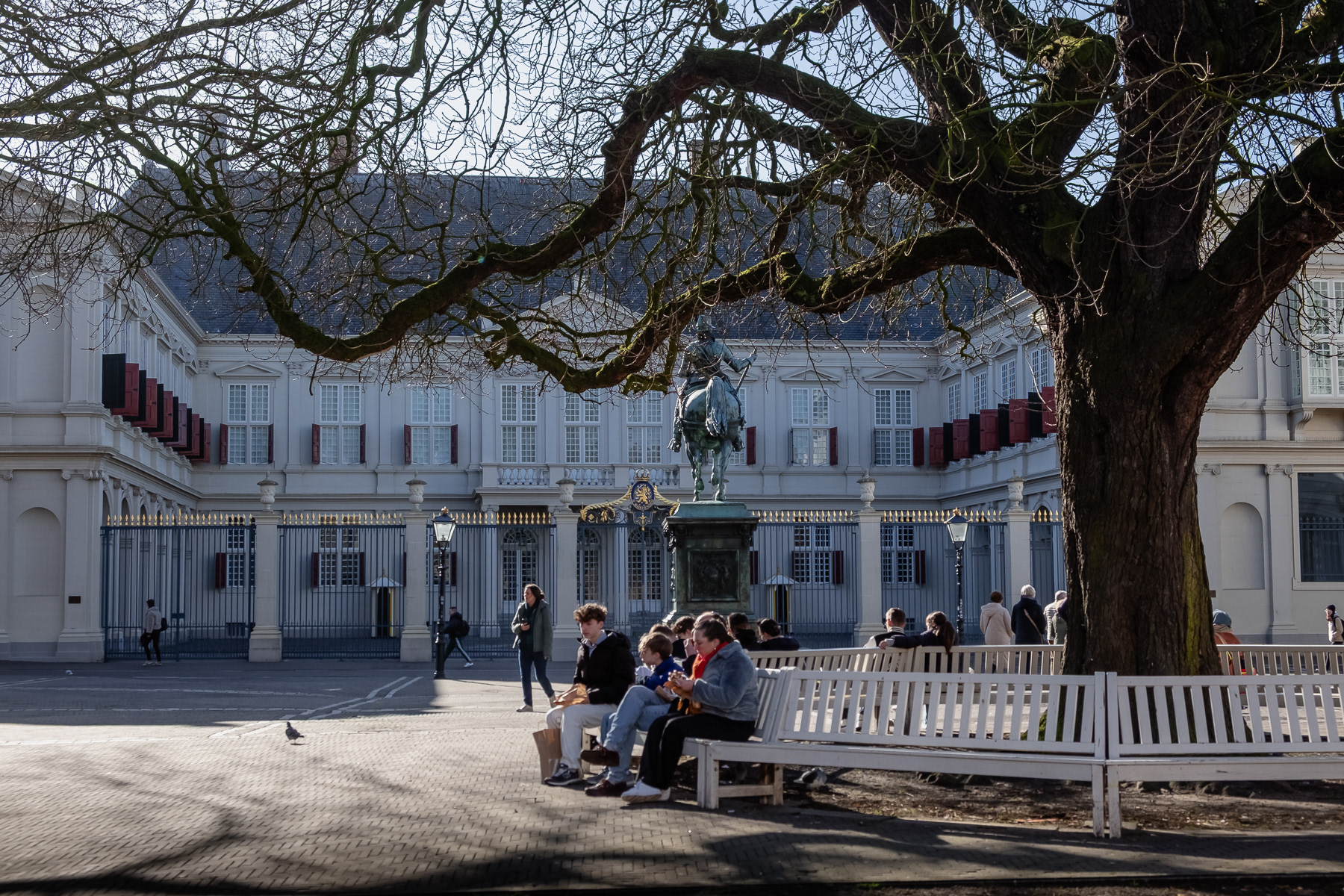
A spectaculair tree offers a nice seating area just in front of the royal palace.
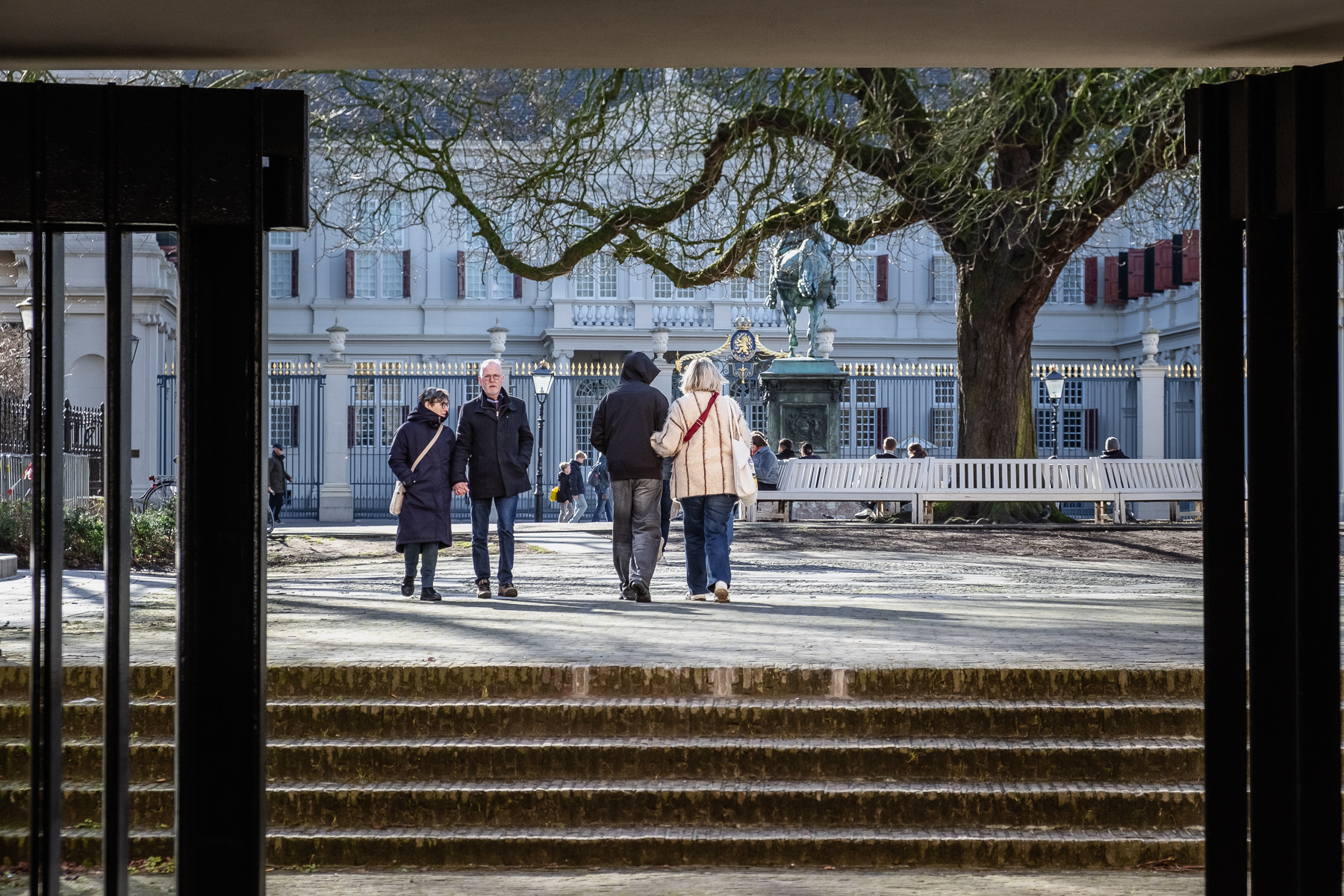
View from the uninteresting publicly accessible part of the palace garden.
The Molenstraat (Mill Street) does no longer have a mill.
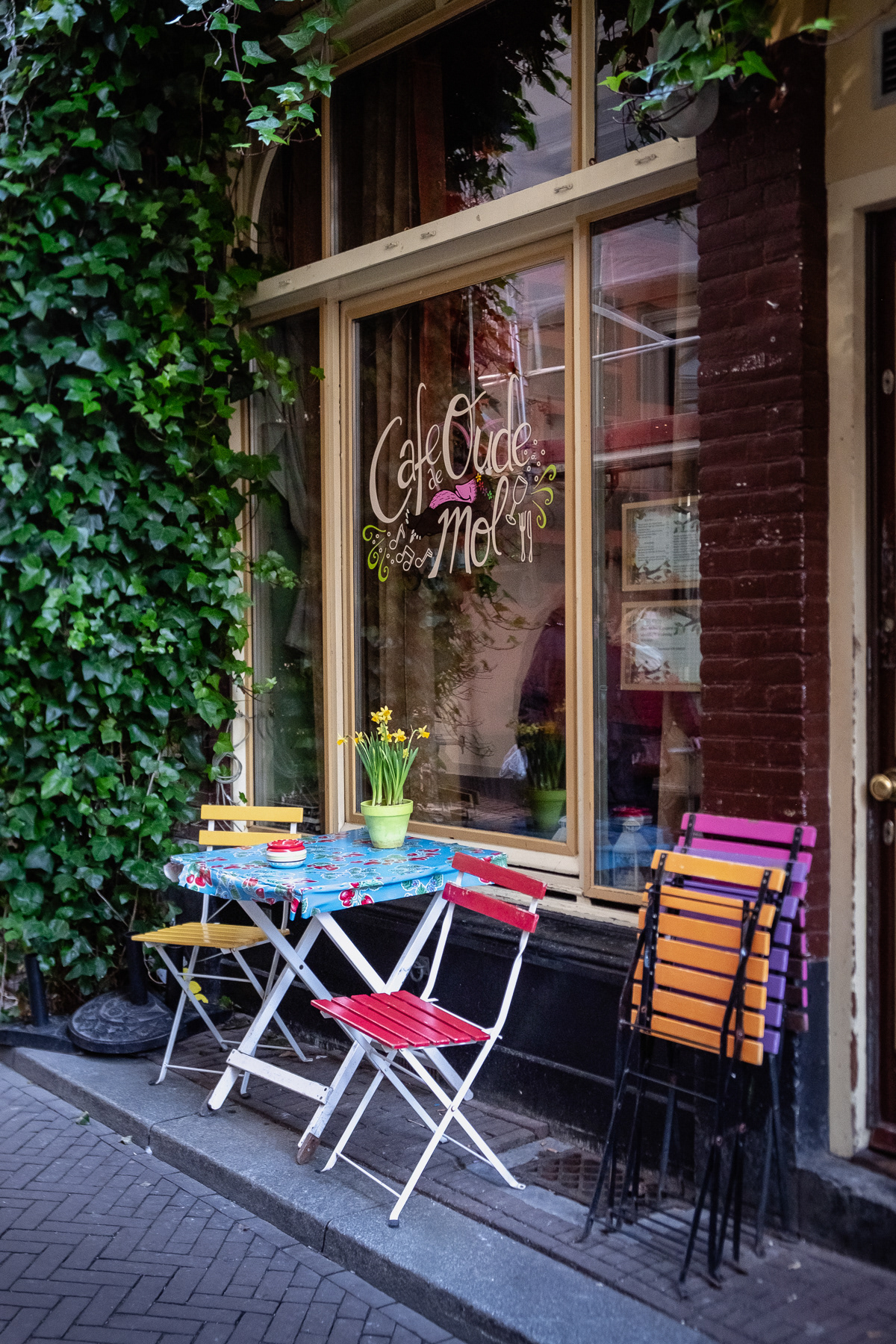
A cute café in the Hofkwartier area

The former city hall of The Hague of 1565.
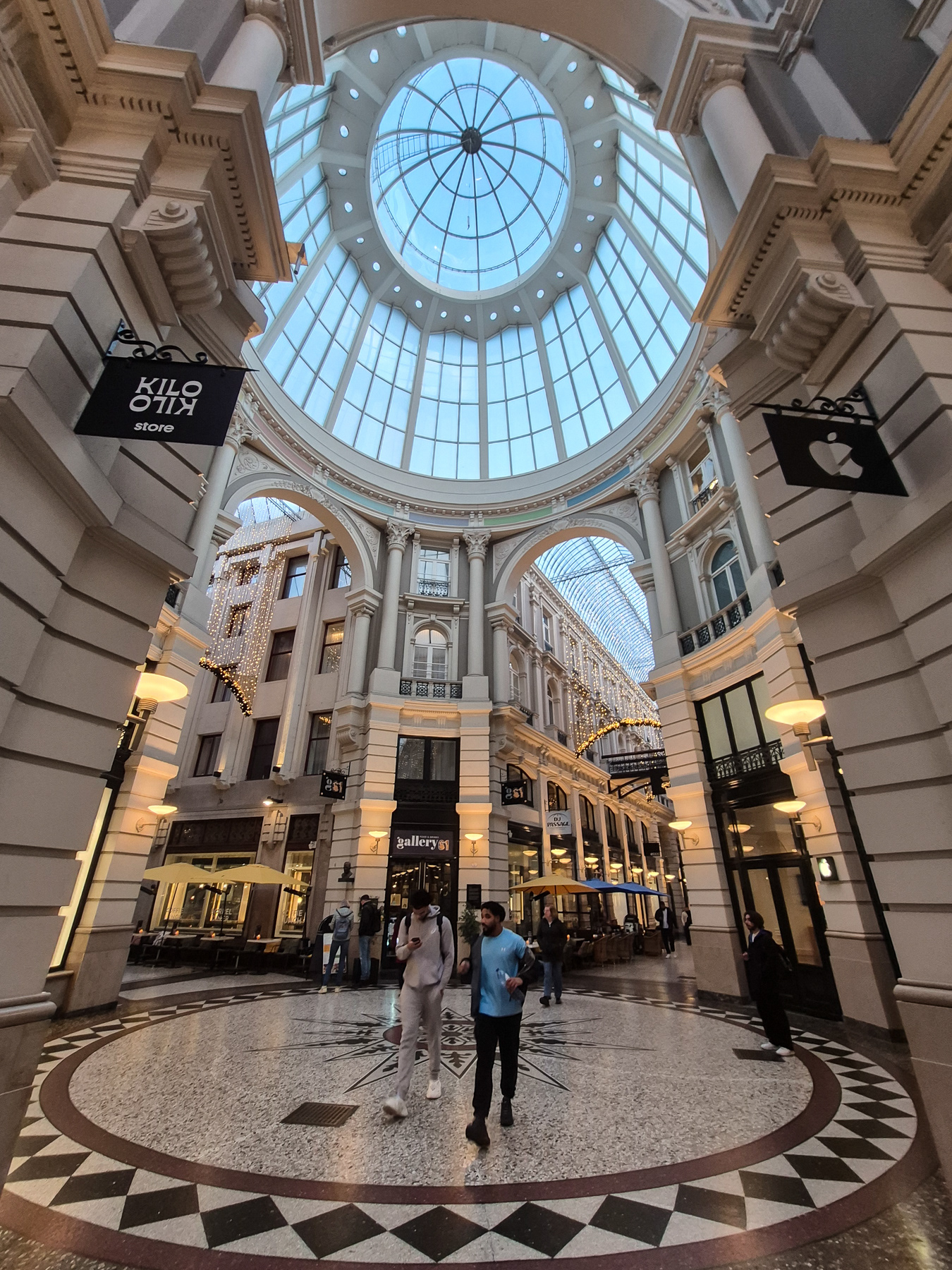
Although officially no part of the Hofkwartier, the adjacent Passage monumental shopping mall has a royal look and feel. Photo taken in October 2025.
Apart from fashion and some signs, nothing much else has changed in the Hoogstraat (High Street). This photo is from July 2004.
The Kurhaus in Scheveningen, July 2004
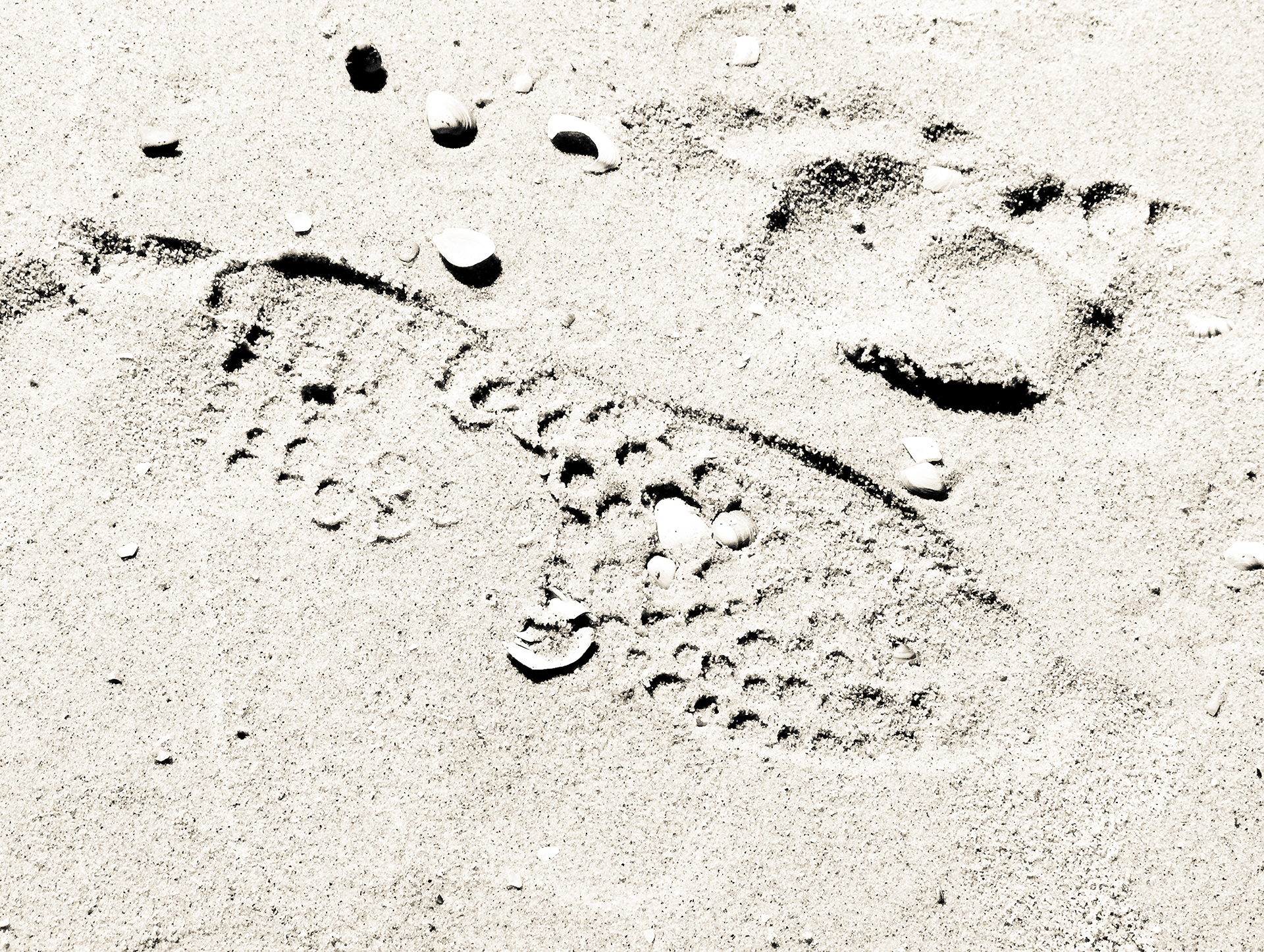

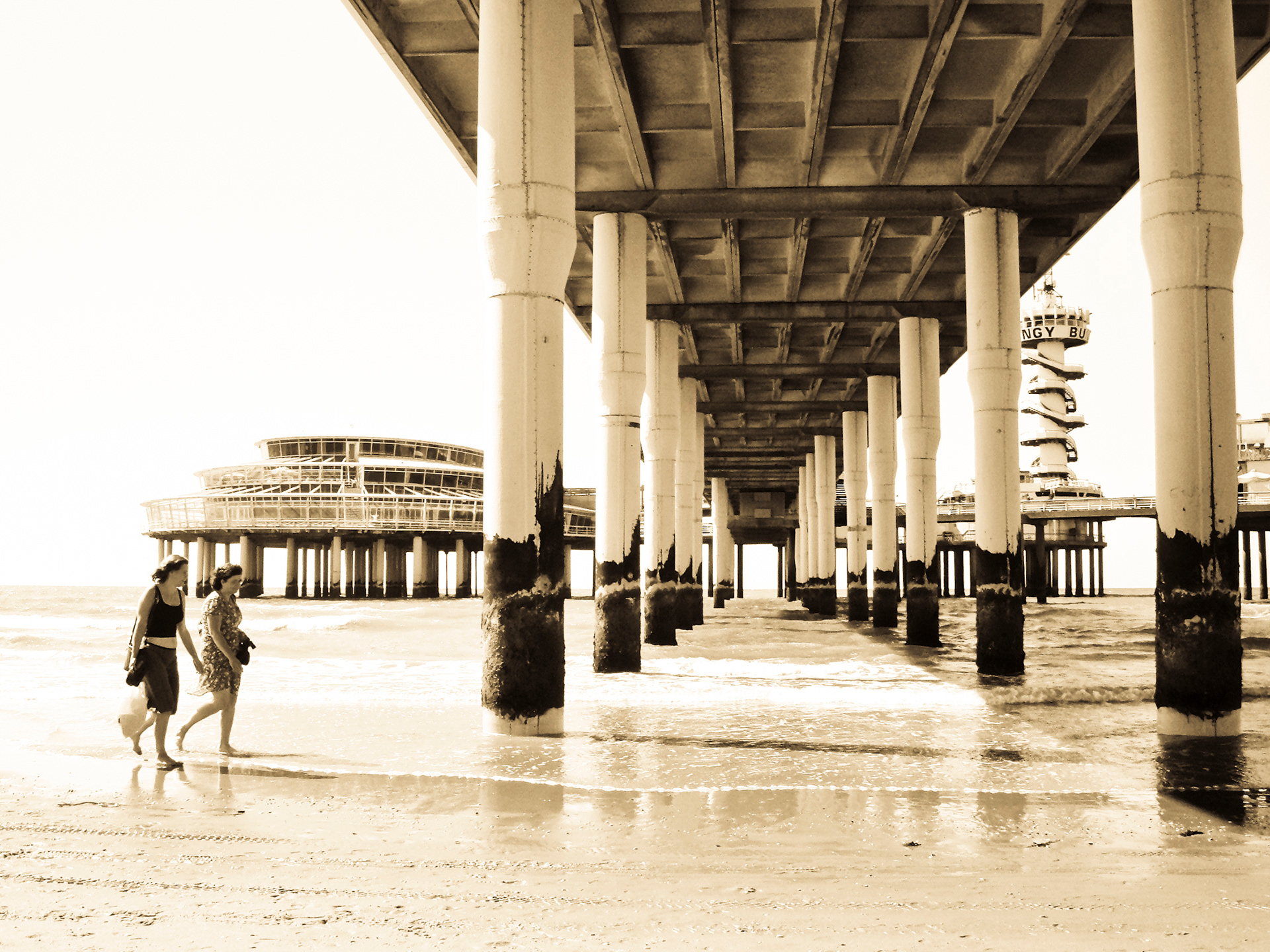
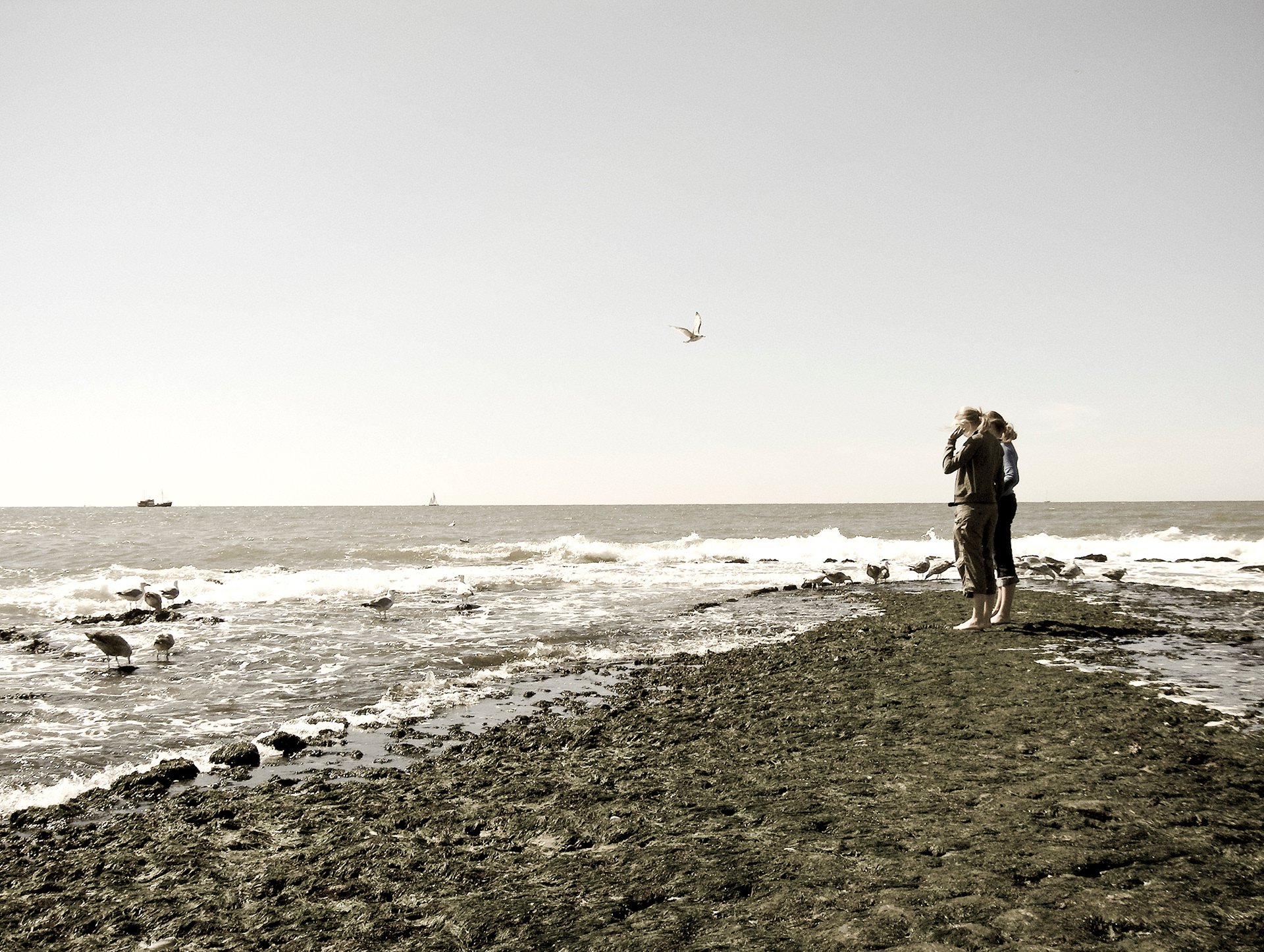
Underneath the Scheveningse Pier on a sunny day in February 2025
Scheveningen beach, seen from the pier. View towards the north on a windy August morning, 2024
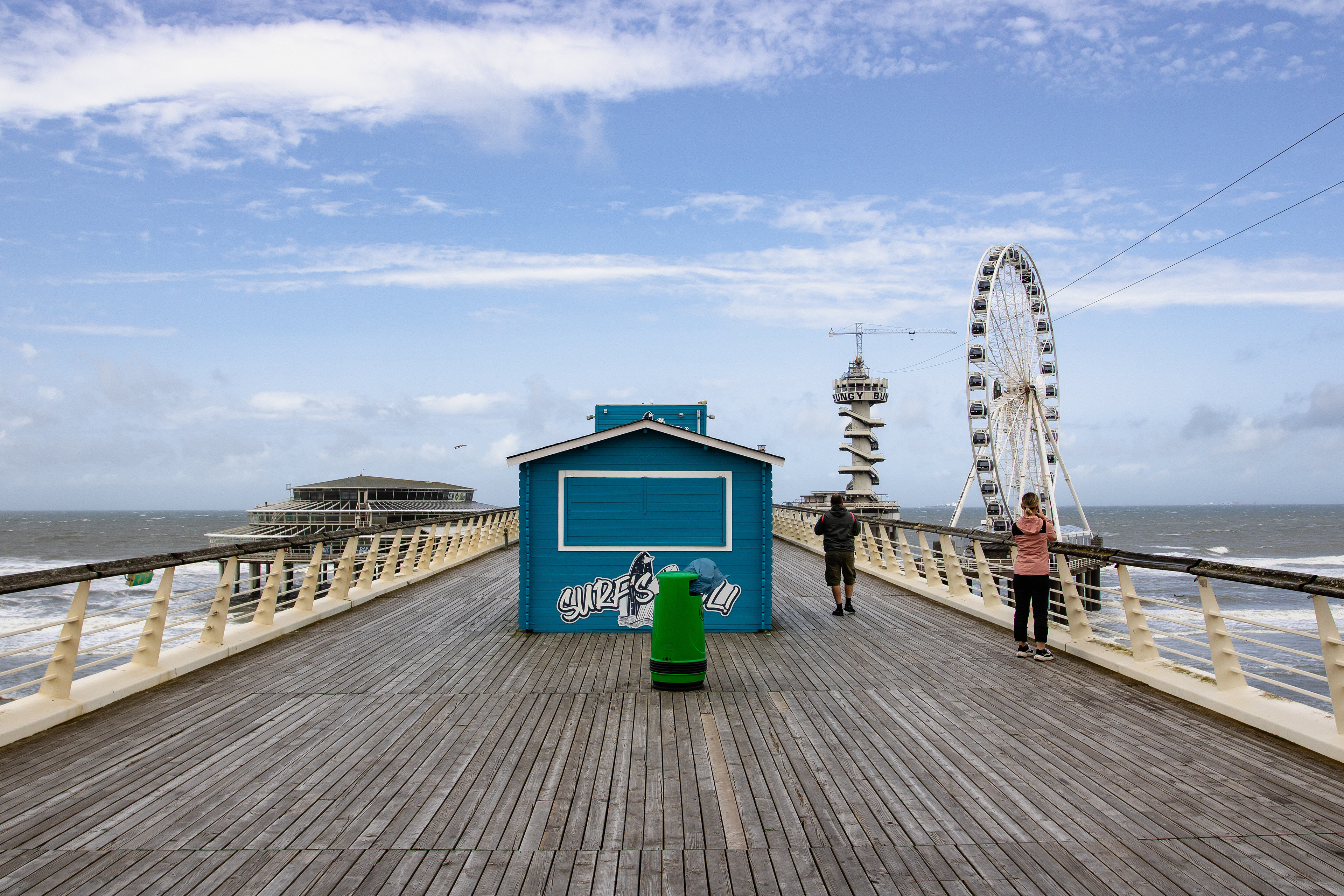

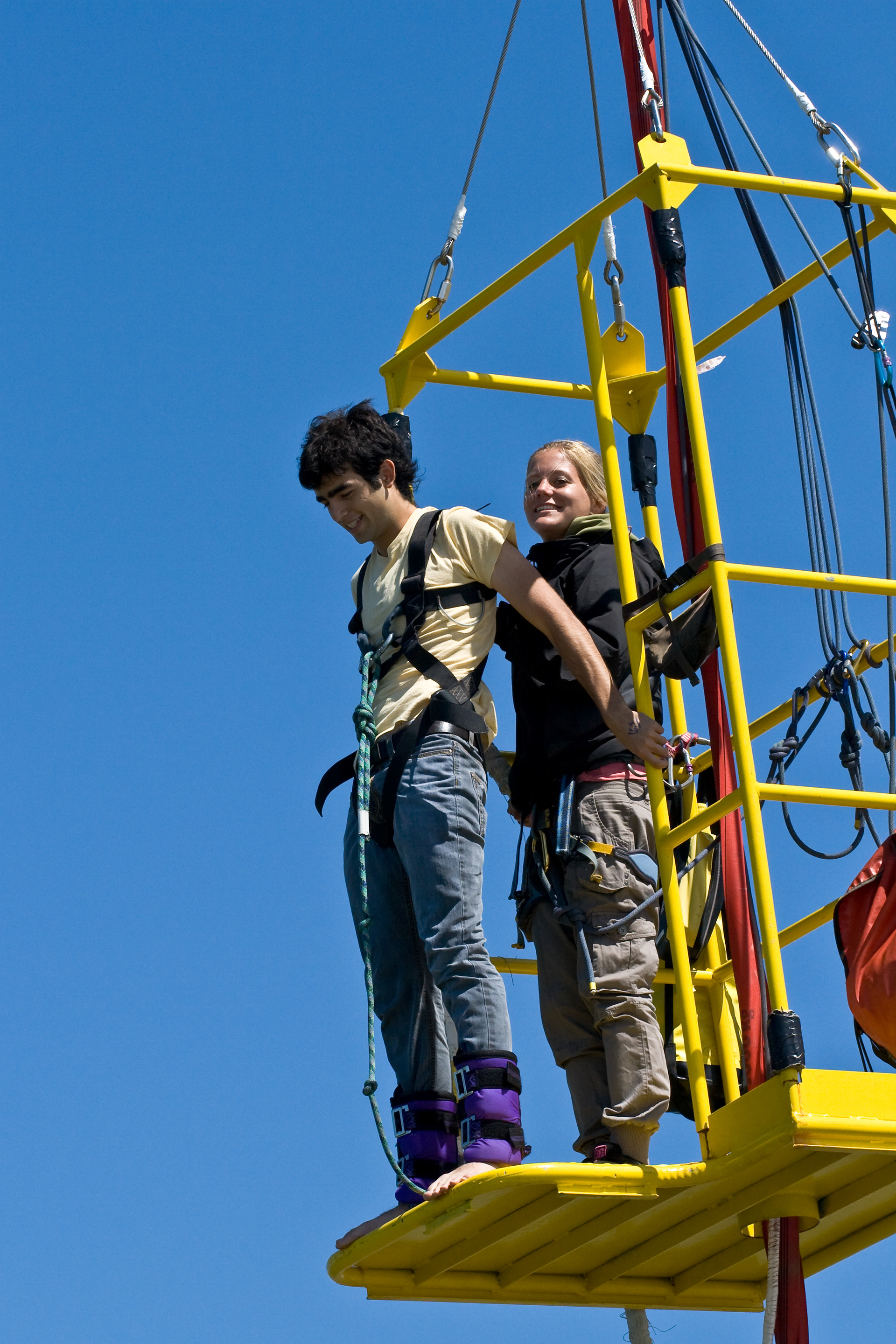


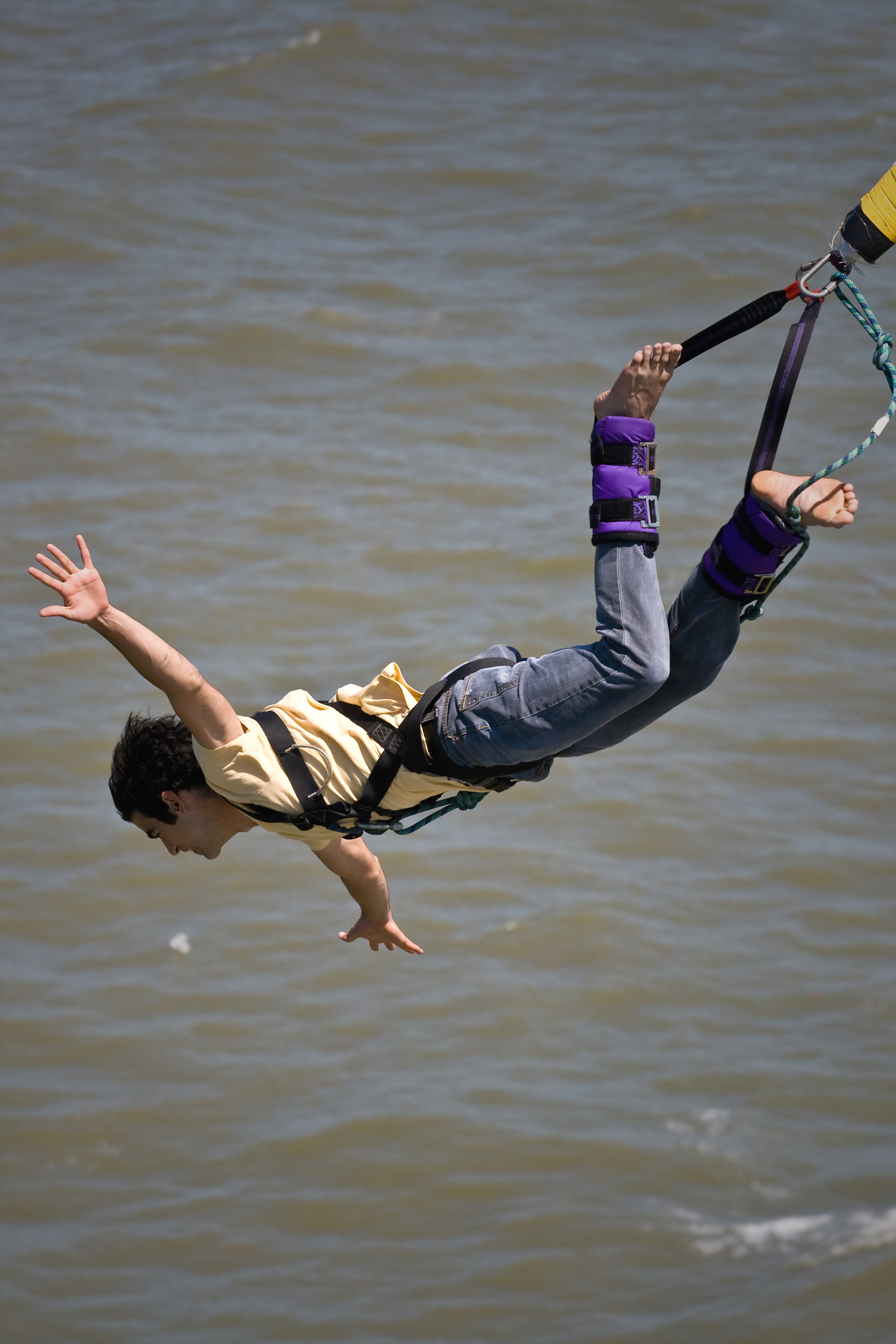
Bungee jumping from the Pier of Scheveningen, July 2009.

